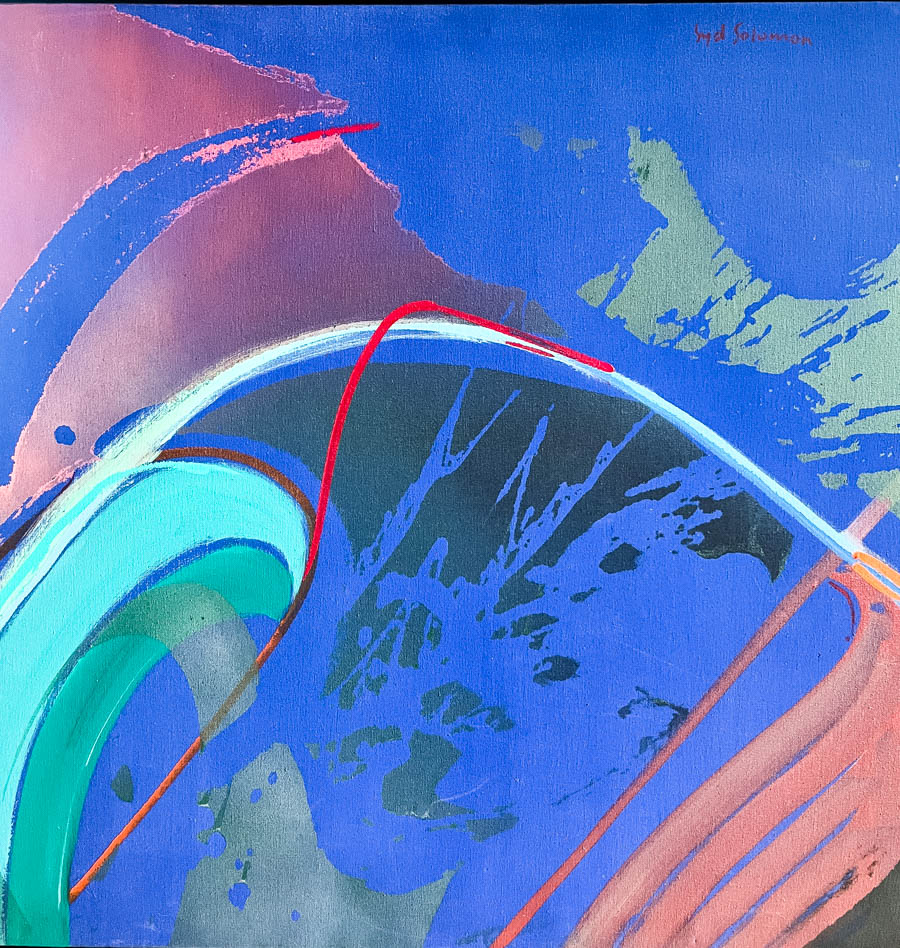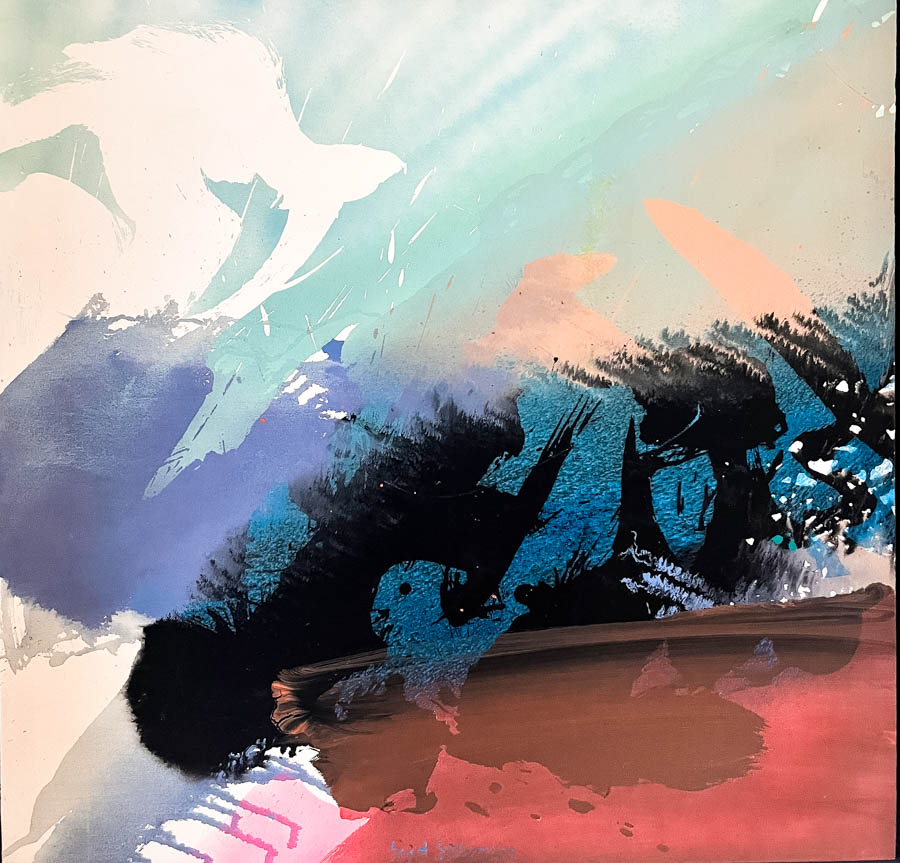It’s the middle of the afternoon on a Wednesday and up in the very quiet and very empty fourth floor of the Ringling College Academic Center Tim Jaeger’s students are hard at work. They sit on tables and cross-legged on desks, hunched in close circles on swivel chairs with computers in their laps, chatter restrained to the low drone of professional collaboration, ideas softly passed back and forth. There are no paintbrushes or sketchbooks here, no clay to mold or models to draw. A different sort of creation is at play. In less than two months, the college will host a major exhibition celebrating the life and work of one of Sarasota’s most treasured adopted sons, American abstract artist Syd Solomon, and these 17 students will be its architects.
The class is called “Role of the Curator” and Jaeger teaches it every year under the college’s Business of Art & Design program, assembling a small team from the various disciplines at the college and tasking them with the rather large responsibility of mounting an entire gallery exhibition (mostly) by themselves. “The whole idea is that these students will learn the ins and outs of the gallery industry, while being exposed to top-notch artwork,” says Jaeger, who serves as director and chief curator of galleries and exhibitions at the college. “Because all of the tools that go into supporting the artist in the gallery setting are what’s needed to sustain the artist outside of it.” And a harsh truth of making it as an independent artist is that success requires at least as much business savvy as artistic skill. Or, as Jaeger tells his students: “I’m in the business of making art work.”
And so the students divide into teams—Curatorial, Creative, Marketing, and Events & Programming—each with its own task and set of “deliverables” that it must concept and create. And while Jaeger is always there to offer insight or answer questions, much of the work is autonomous. “It’s the closest thing to just having a job in the creative industry,” says Dave, a junior and graphic designer on the Creative Team, where he and four other students are responsible for concepting and designing all of the various collateral—posters, ads, decals, etc.—that will be used to promote the show. “But right now we’re focusing on the exhibition’s identity through design,” says Diego, a senior, “and making sure everything is cohesive.” This is art student talk for branding and the Creative Team is exploring all of its options.

The Events and Programming team was whipping up a brainstorm in the middle of the room, ideas flying fast and loose in these early planning stages. There will be ArtWalks, there will be lectures, there will be a Syd Solomon-era-themed dance for the students. But the big challenge, and perhaps their largest responsibility, is figuring out how to get Sarasota residents who are not familiar with the campus to pay a visit. Angie, a junior, suggests an immersive experience in the vein of the Beyond Van Gogh exhibition that came through Sarasota last year, all large-scale projection and animation. “So you feel like you’re part of the artwork,” she says, “and the experience is bigger than just walking through a gallery.” Questions abound. How does one create an immersive exhibit? Do they have the time and funds? Unknown. But therein lies part of the lesson. Feasibility, budget and time constraints are facts of life for the professional and not everything can sit on the canvas until it’s ready.
But while half of the Marketing Team hunches over a press release mid-draft, puzzling over how best to frame their exhibition within the narrative of Solomon’s life, the fourth team, Curatorial, seems to be missing altogether. Not AWOL, says Jaeger, but busy off-campus. After all, someone has to take care of the actual art.
“And they’re doing a brilliant job,” says Dr. Richard Mones, who, along with wife Pamela, is providing all of the art for the exhibition from their private collection of works by Syd Solomon. Nearly 40 pieces will be on display, mostly small-scale work that has either not been shown before in Sarasota or at least has not been shown together, and it’s up to the Curatorial Team to photograph and catalog all of it. Some of this is standard-practice professional CYA, documenting the condition of the work before receiving, but it’s also a crucial part of the creative process, as marketing, events and creative are all waiting for the final answer as to what exactly they’ll be working with. For instance, before cataloging, none of the students knew of Solomon’s penchant for careful note taking on the reverse of every canvas. Now, they’re considering making it a focal point of the exhibition, as a glimpse into the artist’s process. For Mones’ part, he’s thrilled for a peek into the gallerist’s process. “You go to an exhibition and it’s just there,” he says. “You don’t know what went into the planning of it all, which I find fascinating.”
Fascination is exactly what the class is aiming for. “How do we make an exhibition that people can’t resist?” Jaeger asks, lobbing questions over the room while the different groups work. “How do we introduce Syd Solomon to people who might never have set foot in an art gallery?” And while he waxes poetic on Solomon’s Sarasota legacy and the role of the exhibition in preserving that legacy, the conversation among the students shifts as well. There are no easy answers. “Why does art matter?” asks one, prompting her team to dig into something more fundamental for answers. And in the corner, one student from the Marketing Team sits alone with her laptop, moving paragraphs around on a press release that she is still not satisfied with.
She didn’t love Solomon’s work at first, she admits. It was colorful and pretty but she was not moved. But as she read more and more about Solomon’s life—both his time designing camouflage in World War II and his time holding court in Sarasota—her perception began to shift. Abstractions gained their anchors and all the swirls became shapes and then became stories. If she can give the reader just some semblance of that same experience, she says, of her own honest journey from unknowing and unimpressed to appreciative and understanding, then she can say she did her job. And if they can do that with the whole exhibition? “That would be us succeeding,” she says.









